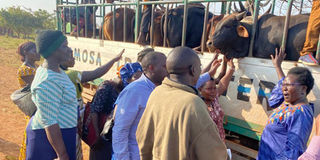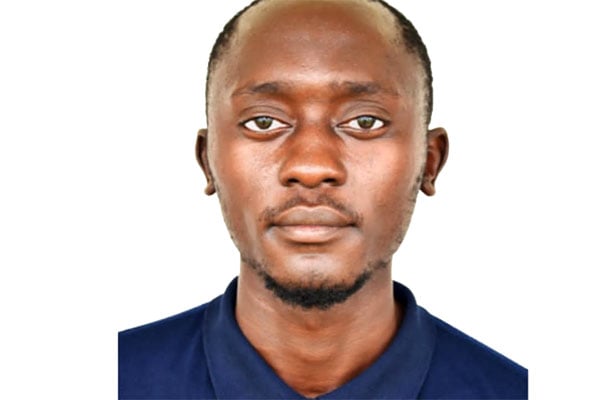Prime
NAGRC gives 120 oxen to boost farming in Apac

The deputy chairperson of Parliament’s Agriculture Committee, Dr Agnes Atim Apea (right), hands over the oxen to the beneficiaries at Maruzi ranch, Apac District, at the weekend. PHOTO/ BILL OKETCH
What you need to know:
The bulls, which were from the government’s Maruzi ranch, were handed over to the beneficiary groups on Saturday
The National Animal Genetic Resources Centre and Data Bank (NAGRC & DB) has given 120 oxen to farmer groups in Apac District to boost crop production.
The bulls, which were from the government’s Maruzi ranch, were on Saturday handed over to the beneficiary groups to support them in land cultivation.
Mr Sam Opira, a district councillor, hailed NAGRC for always supporting the local population with farming solutions that have seen them increase their household incomes.
This newspaper has learnt that farmers always access dairy heifers, fattening bulls, piglets, goats, chicken, fish fingerings and artificial insemination services from NAGRC.
Mr Asanti Odongo, the district chairperson, called upon the government to increase funding for NAGRC cattle breeding and multiplication programmes so that the farming communities can continue to access them.
The deputy chairperson of Parliament’s Agriculture Committee, Dr Agnes Atim Apea, thanked NAGRC for the timely intervention.
Dr Apea, who is also the Woman Member of Parliament for Amolatar District, promised to lobby the government so that NAGRC livestock breeding and multiplication programmes get more funding since they directly benefit farmers.
Mr Garry Daniel Ogweng, the chairperson of Maruzi Youth Development Sacco, said their group received eight bulls.
“Our group has 20 acres of farmland and every planting season, we were spending more than Shs1.6 million on hiring tractors to cultivate the land but now the eight oxen will help us save the money for other purposes,” he said in a telephone interview yesterday.
He also said the oxen will increase their productivity. “Last year, we fetched 300 bags of maize but now that we have these oxen at our disposal, our production will go up,” Mr Ogweng said. Draft animals have been used by farmers around the world for thousands of years. They can be used for transporting crops, materials, water and people.
Most farmers in Uganda use rudimentary tools in farming. For instance, of the 3.6 million respondents in a study conducted by the Uganda Bureau of Standards (Ubos) in 2010, 95.8 percent used hoes.
The president of the UN’s International Fund for Agricultural Development (IFAD), Mr Alvaro Lario, recently called for long-term rural development to prevent recurring food crises.
Background
According to World Bank, growth in agriculture is two to four times more effective at reducing poverty than growth in other sectors. The number of people facing acute food insecurity soared - from 135 million in 2019 to 345 million in 2022, according to UN estimates.




